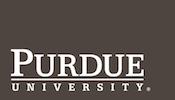Abstract
The project addresses a significant literature gap in hospitality and tourism marketing with the use of counterfactual thinking strategy, a content strategy that forms an effective brand storytelling mechanism. Hospitality and tourism business offerings are complex with multi-components and a high degree of intangibility. Therefore, content marketing when well executed will play a critical role in tangiblizing our experience-based products and building brand equity. In this project, we aim to identify specific visual traits in brand storytelling that can optimally engage consumers. These identified traits will become useful parameters for hospitality business in their effort to create compelling brand stories. Additionally, given hospitality and tourism businesses tend to serve a wide population with various cultural backgrounds, we hope to identify culturally specific content traits that will assist companies to build emotional bonds with customers from various cultural backgrounds. An empirical study will be conducted on people's perception of images that are representative of various visual traits and data will be gathered through a survey. There will be also an analysis component where researchers will examine the effect of scenario-based visual storytelling in hospitality and tourism businesses. This second step in conjunction with the results of the experiment will allow researchers to provide suggestions in hospitality brand storytelling practices. This research shall provide evidence-based recommendations for the industry practitioners in better structuring their brand stories, and in better communicating their brand value to a global audience.
Keywords
Counterfactual Thinking, branding, destination marketing, storytelling
Select the category the research project fits.
Social Sciences/Humanities
Is this submission part of ICaP/PW (Introductory Composition at Purdue/Professional Writing)?
No
Recommended Citation
Wang, Kexin, "Use of Counterfactual Thinking Technique in Storytelling: Effect on Affect and Aesthetic Judgement of a Destination/an Attraction" (2019). Purdue Undergraduate Research Conference. 39.
https://docs.lib.purdue.edu/purc/2019/Posters/39
Use of Counterfactual Thinking Technique in Storytelling: Effect on Affect and Aesthetic Judgement of a Destination/an Attraction
The project addresses a significant literature gap in hospitality and tourism marketing with the use of counterfactual thinking strategy, a content strategy that forms an effective brand storytelling mechanism. Hospitality and tourism business offerings are complex with multi-components and a high degree of intangibility. Therefore, content marketing when well executed will play a critical role in tangiblizing our experience-based products and building brand equity. In this project, we aim to identify specific visual traits in brand storytelling that can optimally engage consumers. These identified traits will become useful parameters for hospitality business in their effort to create compelling brand stories. Additionally, given hospitality and tourism businesses tend to serve a wide population with various cultural backgrounds, we hope to identify culturally specific content traits that will assist companies to build emotional bonds with customers from various cultural backgrounds. An empirical study will be conducted on people's perception of images that are representative of various visual traits and data will be gathered through a survey. There will be also an analysis component where researchers will examine the effect of scenario-based visual storytelling in hospitality and tourism businesses. This second step in conjunction with the results of the experiment will allow researchers to provide suggestions in hospitality brand storytelling practices. This research shall provide evidence-based recommendations for the industry practitioners in better structuring their brand stories, and in better communicating their brand value to a global audience.

